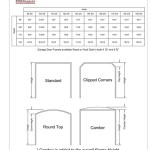Electric Garage Door Installation Cost: A Comprehensive Guide
The decision to install an electric garage door is often driven by convenience, security, and an increase in property value. However, understanding the associated costs is crucial for effective budgeting and planning. This article provides a detailed breakdown of the factors influencing electric garage door installation costs, offering valuable insights for homeowners considering this upgrade.
Electric garage door installation is a multifaceted process involving more than just the cost of the door itself. The total expense encompasses the door's material, size, style, and features, as well as the cost of the electric opener, installation labor, and any necessary modifications to the garage structure. Neglecting to consider all these elements can lead to inaccurate estimations and unexpected expenses.
Before delving into the specifics, it is essential to understand the general scope of what an electric garage door installation entails. This typically includes removing any existing garage door and hardware, preparing the opening for the new door, installing the tracks and springs, mounting the door panels, installing the electric opener and safety sensors, and programming the remote controls. Proper insulation and weather stripping are usually included to ensure energy efficiency and protection from the elements.
Factors Influencing the Cost of an Electric Garage Door
Several key factors determine the overall cost of an electric garage door installation. Understanding these factors allows homeowners to make informed decisions and tailor their choices to suit their budget and needs. These include the type of door, the electric opener, and the installation complexity.
Door Type and Material: The type of garage door selected significantly impacts the overall cost. Common types include sectional doors, roll-up doors, and tilt-up doors. Sectional doors, which are the most popular, are composed of hinged panels that slide up along tracks. Roll-up doors, also known as coiling doors, roll up into a cylinder above the opening. Tilt-up doors swing out and up in one piece.
Each door type has its own set of advantages and disadvantages in terms of cost, durability, and aesthetic appeal. Sectional doors, for example, offer a wide range of design options and insulation levels, while roll-up doors are ideal for garages with limited headroom.
The material of the door also plays a critical role in determining the cost. Common materials include steel, wood, aluminum, and fiberglass. Steel doors are the most affordable and require minimal maintenance. Wood doors offer a classic, natural look but require regular upkeep to prevent warping and rotting. Aluminum doors are lightweight and rust-resistant, making them suitable for coastal areas. Fiberglass doors are durable and can mimic the appearance of wood, but they are typically more expensive than steel or aluminum.
The insulation value of the door, measured in R-value, also affects the price. Doors with higher R-values provide better insulation, reducing energy costs and improving comfort inside the garage. Insulated doors are generally more expensive than non-insulated doors, but the long-term energy savings can offset the initial investment.
Electric Opener Type and Features: The electric opener is an essential component of an electric garage door system. It automates the opening and closing of the door, providing convenience and security. Electric openers come in various types, each with its own features and price range.
Chain-drive openers are the most affordable and are suitable for standard-sized garage doors. They use a chain to lift and lower the door, making them durable but also relatively noisy. Belt-drive openers use a rubber belt instead of a chain, resulting in quieter operation. They are more expensive than chain-drive openers but are preferred for homes where noise is a concern.
Screw-drive openers use a threaded steel rod to move the door. They are reliable and require minimal maintenance, but they can be slower than chain-drive or belt-drive openers. Direct-drive openers, also known as jackshaft openers, mount on the wall beside the garage door and directly turn the torsion bar. They are quiet and space-saving but are typically the most expensive option.
The features of the electric opener also influence the cost. Features such as battery backup, smartphone connectivity, and integrated lighting add to the price. Battery backup ensures that the door can be opened and closed during power outages. Smartphone connectivity allows homeowners to control the door remotely via a mobile app. Integrated lighting provides additional illumination inside the garage.
Installation Complexity and Structural Modifications: The complexity of the installation process and any necessary modifications to the garage structure can significantly impact the overall cost. Standard installations, where the existing garage door is simply replaced with a new electric one, are generally less expensive than installations that require structural modifications.
Modifications may be necessary if the garage opening is not standard size or if there are obstructions that need to be addressed. For example, if the garage door frame is damaged or deteriorated, it may need to be repaired or replaced before the new door can be installed. Similarly, if there are electrical issues or if the wiring is not up to code, an electrician may need to be hired to make the necessary repairs.
The location of the garage can also affect the installation cost. Installations in remote areas or areas with limited access may incur additional travel fees. Similarly, installations in areas with strict building codes or permit requirements may require additional inspections and paperwork, which can add to the cost.
Detailed Cost Breakdown
To provide a clearer understanding of the cost components, a detailed breakdown of the expenses associated with electric garage door installation is presented. This breakdown includes the cost of the door, the electric opener, the installation labor, and any additional expenses.
Cost of the Garage Door: The cost of the garage door itself varies depending on the type, material, size, and features. A basic, non-insulated steel door can cost between $500 and $1,500. A higher-end, insulated wood or fiberglass door can cost between $2,000 and $5,000 or more. Custom-designed doors with unique features and finishes can cost even more.
The garage door's dimensions also play a role in the cost. Standard single-car garage doors are typically 8 to 10 feet wide and 7 to 8 feet high. Double-car garage doors are typically 16 to 18 feet wide and 7 to 8 feet high. Larger doors will generally cost more than smaller doors.
Cost of the Electric Opener: The cost of the electric opener depends on the type, features, and brand. A basic chain-drive opener can cost between $150 and $300. A belt-drive opener can cost between $250 and $450. A screw-drive or direct-drive opener can cost between $350 and $600 or more. Openers with advanced features, such as battery backup and smartphone connectivity, will typically be more expensive.
Installation Labor Costs: Installation labor costs vary depending on the complexity of the installation and the geographic location. On average, professional installation can cost between $150 and $500. Complex installations that require structural modifications or electrical work may cost more. It is advisable to obtain multiple quotes from different installers to ensure a competitive price.
Additional Expenses: In addition to the cost of the door, the electric opener, and the installation labor, there may be additional expenses to consider. These expenses may include:
* Permit fees: Depending on local regulations, a building permit may be required for garage door installation. Permit fees can range from $50 to $200 or more.
* Haul-away fees: If the old garage door needs to be removed and disposed of, there may be a haul-away fee. This fee can range from $50 to $100.
* Electrical work: If electrical work is required, such as installing a new outlet or upgrading the wiring, an electrician may need to be hired. Electrical work can cost between $50 and $200 per hour.
* Structural modifications: If structural modifications are required, such as repairing the garage door frame or reinforcing the opening, a contractor may need to be hired. Structural modifications can cost between $200 and $1,000 or more.
* Painting and finishing: If the new garage door needs to be painted or finished to match the existing exterior of the house, this can add to the cost. Painting and finishing can cost between $100 and $500.
Tips for Saving Money on Electric Garage Door Installation
While electric garage door installation can be a significant investment, there are several ways to save money without compromising on quality or safety. Careful planning, strategic shopping, and DIY efforts can help reduce the overall cost.
Obtain Multiple Quotes: One of the most effective ways to save money is to obtain multiple quotes from different installers. Comparing quotes allows homeowners to identify the most competitive price and negotiate for better terms. When requesting quotes, it is important to provide accurate information about the garage door size, type, and features, as well as any existing structural issues or modifications that may be required.
Consider Standard Sizes and Materials: Opting for standard sizes and materials can significantly reduce the cost of the garage door. Custom-designed doors with unique features and finishes are typically more expensive than standard doors. Similarly, choosing common materials like steel or aluminum can be more affordable than wood or fiberglass.
DIY Demolition and Preparation: If comfortable with basic home improvement tasks, homeowners can save money by handling the demolition and preparation work themselves. This may include removing the old garage door, cleaning the opening, and preparing the area for the new door. However, it is crucial to exercise caution and follow safety guidelines to avoid injuries or damage to the property.
Look for Sales and Discounts: Many garage door companies offer sales and discounts throughout the year, particularly during seasonal promotions or holidays. Taking advantage of these deals can result in significant savings. It is recommended to subscribe to email newsletters and follow garage door companies on social media to stay informed about upcoming sales and promotions.
Choose Energy-Efficient Options: While energy-efficient garage doors and electric openers may have a higher upfront cost, they can save money in the long run by reducing energy consumption. Insulated doors help keep the garage warmer in the winter and cooler in the summer, reducing heating and cooling costs. Electric openers with energy-saving features, such as LED lighting and standby mode, can also help lower energy bills.

How Much Does A New Garage Door Cost 2025 Replacement Guide A1 Service

Cost To Install A Garage Door S Installed Fixr

Electric Garage Door Cost Fitting S Across The

Electric Garage Door Cost Fitting S Across The

How Much Are Electric Roller Garage Doors Cost Guide

Automatic Garage Door Cost Gta

How Much Does A Garage Door Cost Rollerdor Ltd

Electric Garage Door Cost Top 5 Factors And Guide

How Much Does Garage Door Opener Installation Cost

Electric Garage Door Cost Top 5 Factors And Guide
Related Posts








